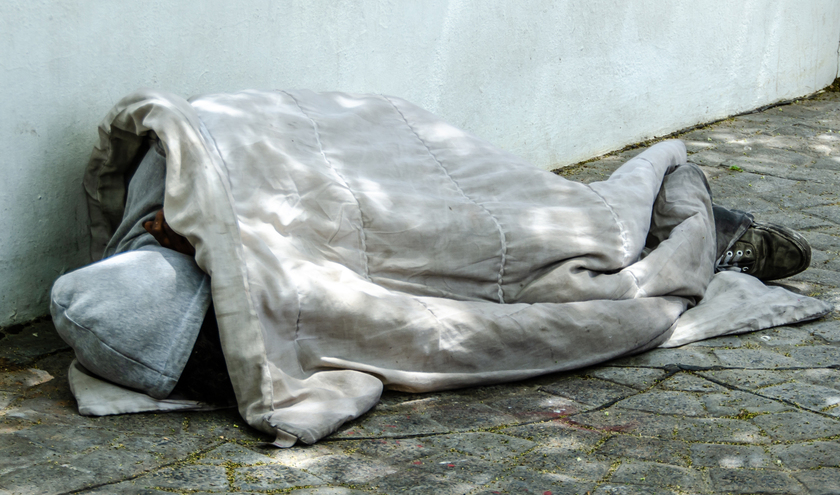Recent data reveals yet another huge rise in levels of rough sleeping in England and while the capital is world-leading in data about the problem of rough sleeping, often far less attention is given to the importance of mapping and understanding our existing interventions. Resources such as the LHF Atlas, which enable us to see a fuller picture, are especially critical as the government determines how it will ‘turn the tide' on rough sleeping.
Rough sleeping is rising stubbornly in England. In February, the government published the Street Counts and Estimates for 2024. The number of people estimated to be sleeping rough on a single night in autumn 2024 was 4,667 – a rise of 20% compared to the previous year and edging uncomfortably towards the peak across current data collection methods which was in 2017 (4,750 people). London accounts for 28% of those represented in the street counts and estimates (1,318 people).
A similar increase (19%) was found in the CHAIN rough sleeping figures for London for 2023/24 compared to 2022/23. A total of 11,993 people were contacted while rough sleeping by outreach teams over the period of 2023/24, which is the highest since data collection began. This means that the number of people rough sleeping over the whole year (CHAIN data) is nine times higher than the single night estimate in London.
CHAIN provides a wealth of insights beyond the topline figures, including the nationality profile which has shifted significantly over time, and the frequency and duration of contact with outreach teams.
Through this data, and a body of, often small-scale, research about rough sleeping in England, we know quite lot about the problem. That said, it is important to acknowledge weaknesses in the evidence – in particular the way that our current approaches are weighted towards visible rough sleeping, so underrepresent certain groups including women and young people. The Women's Rough Sleeping Census is an example of an initiative seeking to broaden this picture. This is critical work as the way we quantify the problem impacts on the resources targeted; weaknesses in data translate to gaps in services.
The LHF Atlas, produced in partnership with membership body Homeless Link, provides a different view – the service side view. It consistently maps our core interventions for helping people move on from rough sleeping – outreach, accommodation, day centres, Housing First, the pool of social housing ringfenced for rough sleepers via the Clearing House. This simple idea shows the essential infrastructure for meeting the needs of those who have been forced to sleep rough. And it helps to identify where the gaps lie, and more resource may be needed.
The kind of insights that come from mapping services across our 33-borough city include:
• seeing the scale of single homelessness specific accommodation at over 10,000 spaces provided and supported every night;
• identifying areas that have high levels of rough sleeping but lower levels of accommodation.
• the relatively low level of Housing First provision (around 600 spaces) but one that expands across London year-on-year;
• the enduring provision of Tenancy Sustainment Support to 3,900 social rented homes ringfenced for people with experience of rough sleeping;
• the array of small providers who often deliver small accommodation services, as well as large scale providers;
• the extensive network of day centres and winter shelters providing support in partnership with commissioned services.
Of course, mapping services only goes so far. For this information to inform policy and strategy work capable of addressing rough sleeping effectively, it needs to be combined with the evidence base from the statistics and research above. The Strategic Insights Tool is a new resource available to local authorities in London that brings together data from multiple systems to provide a far more sophisticated analysis of rough sleeping patterns and individual journeys through support services.
There is also a nationwide gap in robust evaluation of our core homelessness interventions; one that the Centre for Homelessness Impact is seeking to address with the Ministry of Housing, Communities and Local Government funded Test and Learn Programme and its Hostels Research project. The only intervention that has been rigorously evaluated to date is Housing First. Yet this evidence is important to prove what works.
We don't know what the future holds for rough sleeping services beyond the one-year extension to the Rough Sleeping Initiative which ends in March 2026. Part of the direction of travel in London is likely to be more cross-borough and subregional provision to ensure that getting the right service does not depend on experiencing rough sleeping in the right place. Broader changes in the way local government is organised and financed will also impact.
At this time of uncertainty, local authorities and homelessness service providers need to be crystal clear on the current state of play, so that they can respond effectively. In London, the bird's eye view of core interventions to support people off the streets provided by the LHF Atlas will be more important than ever.
Becky Rice is London Housing Foundation associate and Atlas Project manager


